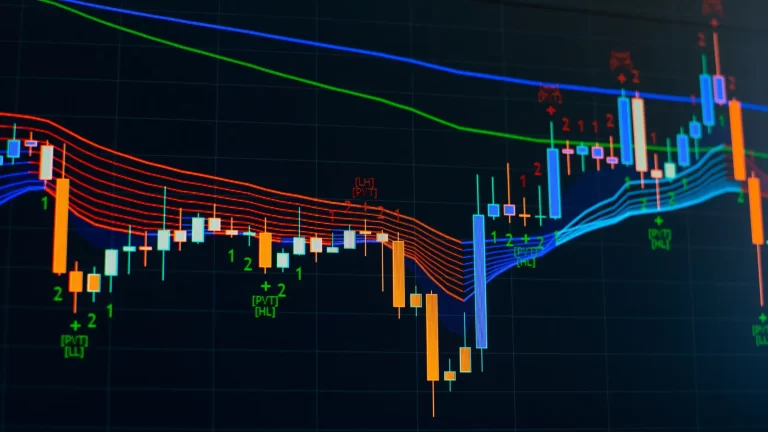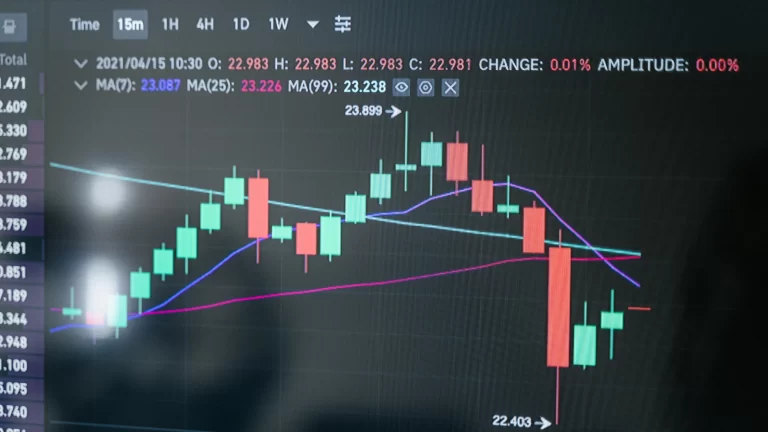How to Trade Crypto Derivatives During High Volatility
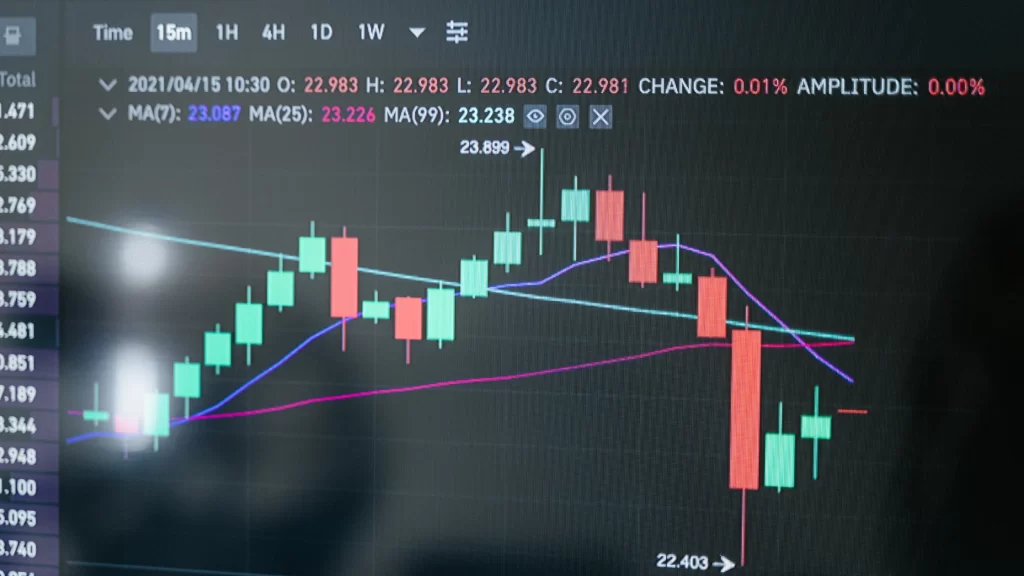
Mastering Implied Volatility, Market Reactions & Trading Tools in the Derivatives Arena
What is Volatility in Crypto?
Volatility is the heart of crypto trading. It refers to how drastically the price of a cryptocurrency moves over time.
In traditional markets, volatility is often seen as a risk. In crypto, it’s an opportunity factory. Price swings of 10–20% in a day are not uncommon, and that’s where sharp traders find alpha.
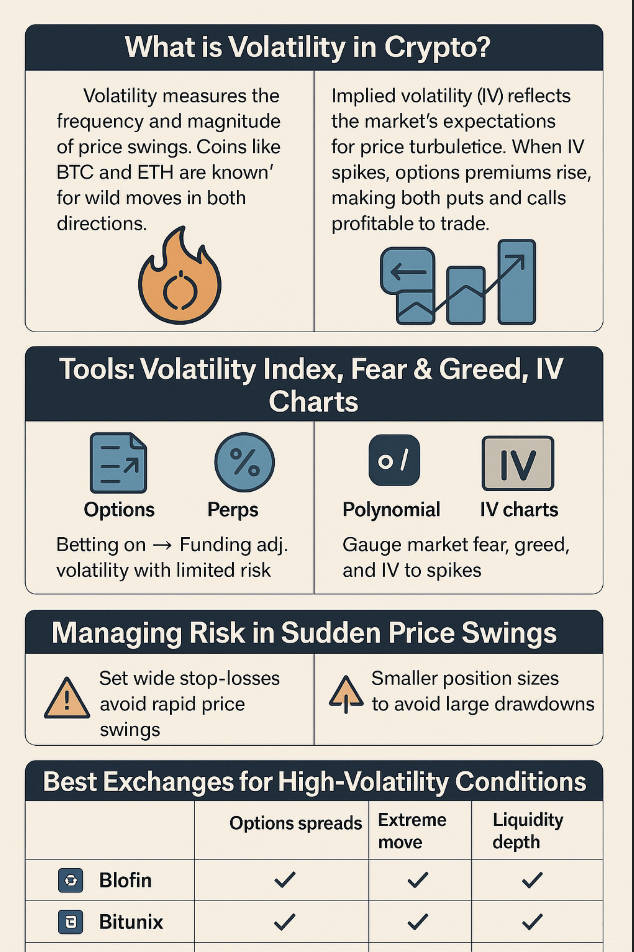
Key Features of Crypto Volatility:
-
24/7 markets with no downtime
-
Influenced by news, whales, liquidations
-
Global market with fragmented liquidity
-
Driven by sentiment and speculation more than fundamentals
Why High IV = High Opportunity
Implied Volatility (IV) represents the market’s expectations for future price movement. In the options world, high IV typically leads to higher option premiums.
When IV is High:
-
Options become expensive (great for sellers)
-
Perps funding rates spike
-
Volatility breakout traders sharpen their tools
Opportunity Zones:
-
After major market news (ETF approvals, hacks)
-
During funding rate divergence on perps
-
Leading into major expirations or unlocks
🎯 Volatility doesn’t just signal chaos—it signals liquidity, attention, and opportunity.
Trading Volatility: Options vs Perps
Options
-
Best for betting on magnitude of moves (not direction)
-
IV Crush happens when IV falls post-event, crushing premium value
-
Great for structured strategies (straddles, strangles)
Platforms:
✅ Deribit | ✅ Polynomial |
Perpetuals (Perps)
-
Ideal for quick directional trades during spikes
-
Use low-latency platforms with tight spreads
-
Great for breakout and mean-reversion setups
Platforms:
✅ Bybit | ✅ Bitunix | ✅ BingX
Tools to Trade Volatility Like a Pro
Here are some essential indicators and dashboards that every volatility-focused trader should bookmark:
| 🛠️ Tool | 🔎 Use Case | 🧪 Best Platform |
|---|---|---|
| Volatility Index (BVOL) | Gauge market-wide fear | Bybit |
| Fear & Greed Index | Sentiment snapshot | Alternative.me |
| IV Charts | Options pricing signals | Polynomial, Deribit |
| Funding Rate Trackers | Trend exhaustion alerts | Blofin, CoinGlass |
Best Exchanges for High-Volatility Conditions
Managing Risk During Volatility Storms
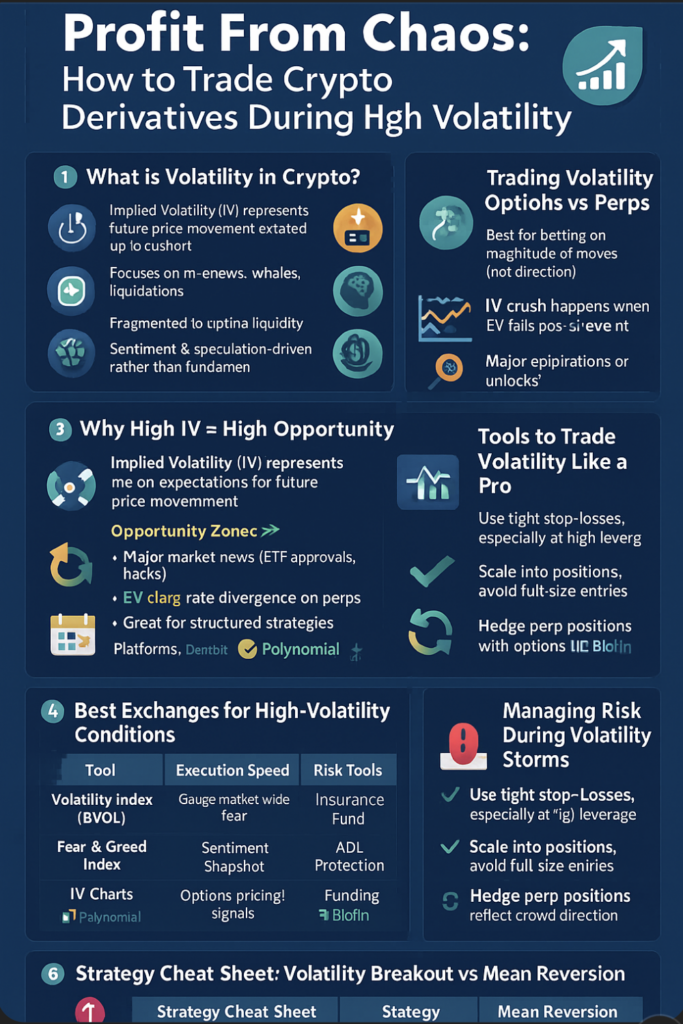
Tips to survive and thrive:
-
✅ Use tight stop-losses, especially at high leverage
-
Scale into positions, avoid full-size entries
-
Hedge perp positions with options
-
Monitor funding rates—they reflect crowd direction
💡 When others panic, the prepared execute.
Volatility Breakout vs Mean Reversion
| 🎯 Strategy | 📉 Setup | 📈 Signal | 🔧 Tools |
|---|---|---|---|
| Volatility Breakout | Price consolidating at range top/bottom | Volume spike + breakout | Bybit, XT.com |
| Mean Reversion | Overextended wick moves | RSI divergence + cooling volume | Blofin, Polynomial |
Key Takeaways
Volatility is the playground of pros. When the market panics, it’s not the loudest that win—it’s the ones with a plan. Whether you’re trading straddles on Deribit, scalping breakout perps on XT.com, or watching IV curves on Polynomial – volatility is your alpha.
So next time the market shakes, don’t flinch. Lean in.

